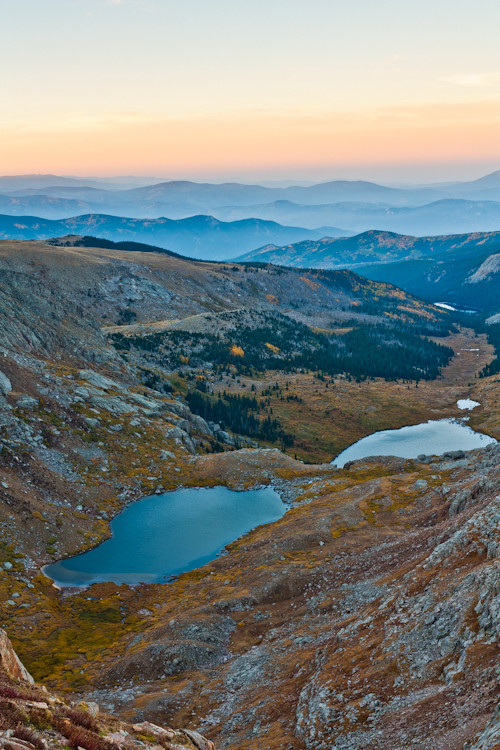As has been mentioned here a few times, a UV/Haze filter or a Polarizing filter will help mitigate the effects of haze. There are quite a wide variety of UV/Haze and Polarizing filters, and there are several other topics here on Photo.SE that discuss them, their pros/cons, etc. so I won't go into that here.
To take a different tack than everyone else, another option is to try to incorporate haze and the fading it causes as distance increases into your photography. While haze is often viewed as a detractor, if you use it as a tool, it can be very beneficial, and a powerful artistic tool. It can also help you find a better angle to photograph your landscapes at, bringing greater and more visible depth into more compositionally appealing scenes.
For example, I took the shot below from about 13,500 feet up on Mount Evans, Colorado, shortly after Labor Day this year (2010). A couple days earlier, and continuing into that day, some bad fires had raged along the Colorado Front Range, putting a lot of particulate in the are that caused some terrible, thick haze that created a total whiteout during the day. I had to wait until just after the sun had set to cut through most of it, but the remainder I actually liked, as it helped add a needed element of depth and differentiation to the scene:

While haze is normally a problem, and can often be from light dispersed so much that all you can capture on film is a frame of glaring white, with a little filtration and some artistic vision, you can incorporate even haze into your photography. Some of the toughest things about landscape photography are learning to wait for the right time, and to take what you get. When you turn the tables on haze, it can become a powerful artistic element in landscape photography.


